Creating a wildlife-friendly landscape with native Florida shrubs is not just an act of beautification but a meaningful contribution to our state’s biodiversity.
As development continues to replace natural areas, home gardens become increasingly important refuges for wildlife. Your native garden will require less water, fertilizer, and pesticides than conventional landscaping while providing essential habitat for Florida’s birds, butterflies, and beneficial insects.
Native Florida shrubs form the essential middle layer of any well-designed wildlife garden, bridging the gap between towering trees and ground-hugging perennials. In the Sunshine State’s diverse ecosystems, native Florida shrubs have evolved remarkable adaptations that make them not only beautiful landscape elements but also vital wildlife support systems.
Star Performers for Florida Wildlife
These 17 native Florida shrubs can serve as specimen features, privacy screens, borders, or foundations for your garden design. At the same time, they provide food, shelter, and nesting sites for countless creatures.
1. Firebush (Hamelia patens)
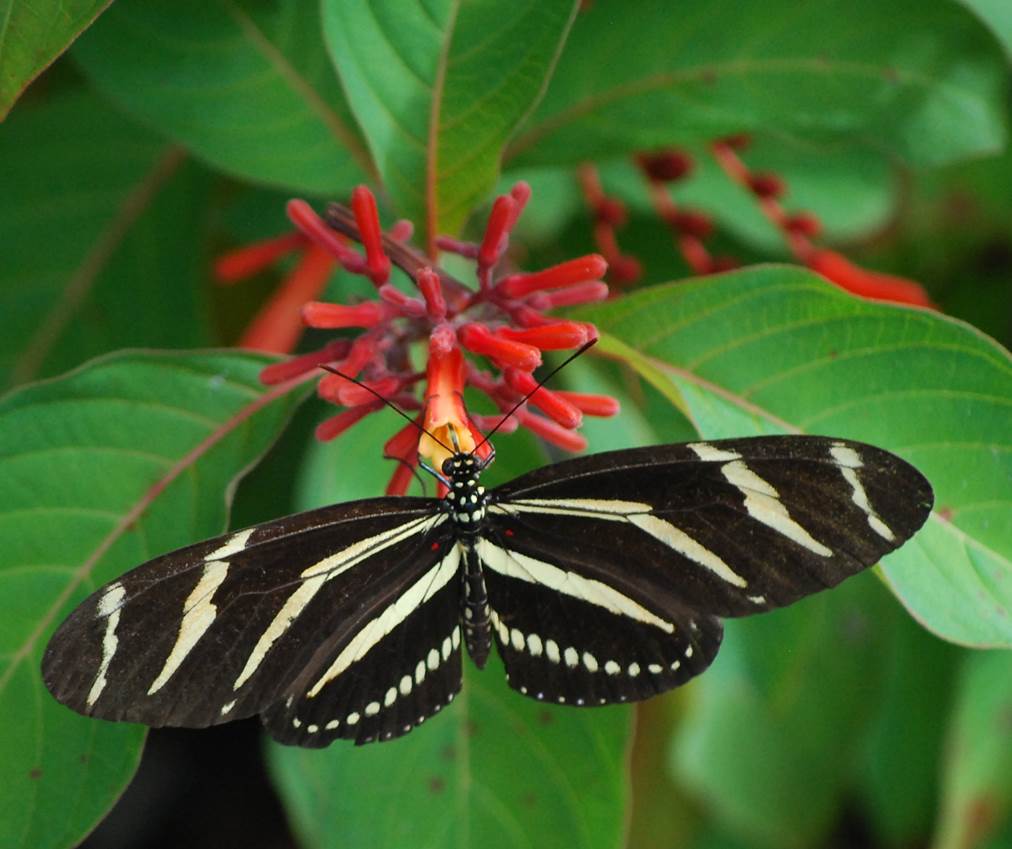
Firebush stands as one of Florida’s most spectacular wildlife magnets, forming a naturally rounded shrub that reaches 6-8 feet tall and 4-6 feet wide at maturity. Its most striking feature is the continuous display of tubular orange-red flowers that bloom from spring through the first frost, creating fiery clusters at branch tips that seem to glow in the landscape.
These flowers are specifically designed for hummingbirds, particularly ruby-throated hummingbirds during migration, though butterflies like Gulf fritillaries, zebra longwings, and various skippers also feed on the nectar.
Following the blooms, small dark purple berries appear that attract mockingbirds, cardinals, catbirds, and painted buntings.
This shrub thrives in Florida’s hammock edges, pinelands, and coastal areas, preferring full sun to partial shade with well-draining soil.
Its rapid growth and tolerance for both drought and occasional flooding make it an excellent choice for naturalistic gardens where it can serve as both a stunning focal point and a wildlife restaurant.
2. Beautyberry (Callicarpa americana)
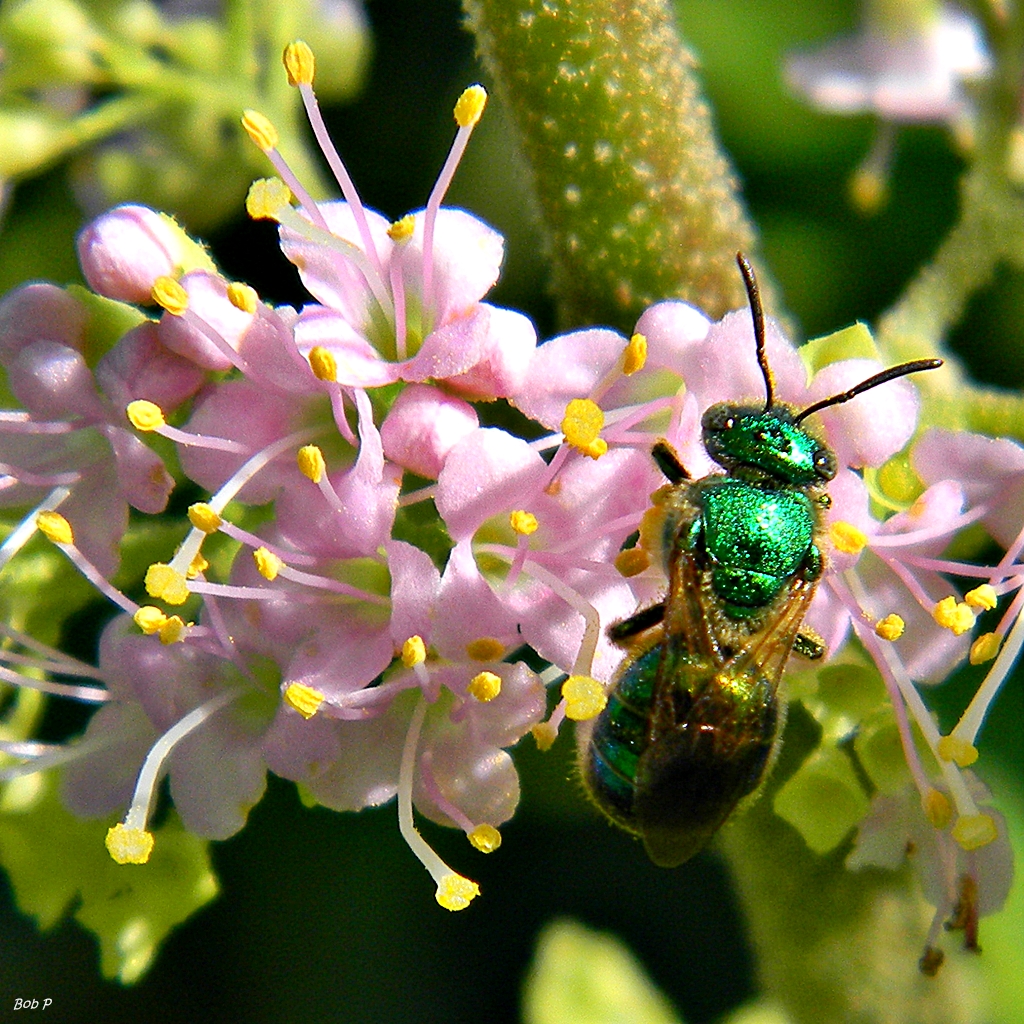
American beautyberry creates one of autumn’s most dramatic displays in the Florida landscape, growing into an open, arching shrub 4-6 feet tall and equally wide. The plant produces inconspicuous pink flowers in small clusters along the stems during summer.
However, its true glory comes in fall when brilliant purple berries appear in dense rings around the branches, creating an almost jewel-like effect that persists well into winter. These berries are crucial food sources for northern mockingbirds, gray catbirds, northern cardinals, brown thrashers, and American robins, particularly during winter months when other food sources are scarce.
The shrub naturally occurs in Florida’s hammocks, woodland edges, and disturbed areas, thriving in partial shade to full sun with moist, well-draining soil.
Beautyberry’s loose, informal growth habit makes it perfect for naturalistic landscapes, and its ability to resprout from the roots means it can be cut back hard in late winter to maintain size while ensuring abundant berry production.
3. Coontie (Zamia integrifolia)
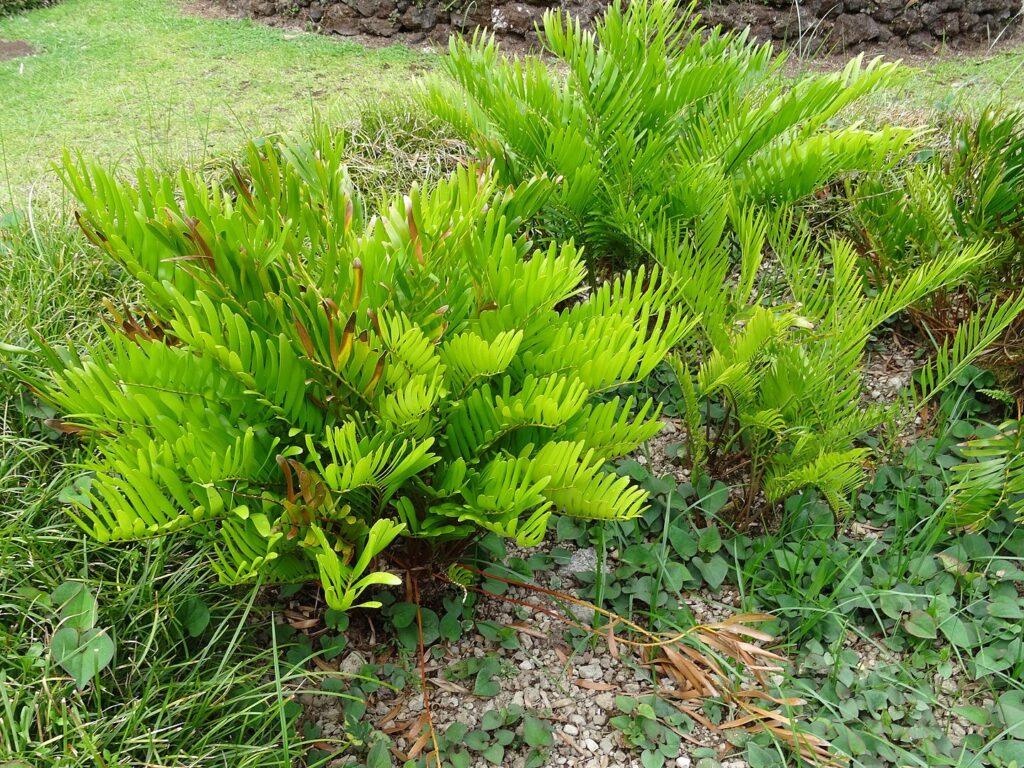
Coontie represents Florida’s ancient botanical heritage as the state’s only native cycad, forming a distinctive palm-like appearance that reaches 3-4 feet tall and 4-5 feet wide over many years of slow growth. This living fossil produces compound leaves with thick, glossy green leaflets that emerge in flushes, creating an architectural presence in the landscape.
Coontie is dioecious, with male and female plants producing different cone structures, and female plants develop bright orange-red seeds that provide food for various wildlife despite being toxic to mammals.
Most importantly, coontie serves as the exclusive host plant for the endangered Atala butterfly (Eumaeus atala), whose caterpillars feed solely on its leaves, making this plant essential for the butterfly’s survival.
Native to Florida’s coastal hammocks, pinelands, and scrub areas, coontie thrives in partial shade to full sun with well-draining, sandy soil and excellent drought tolerance once established.
Its low-maintenance nature and unique appearance make it an excellent choice for xeriscaping while supporting one of Florida’s most beautiful and rare butterflies.
4. Wild Coffee (Psychotria nervosa)
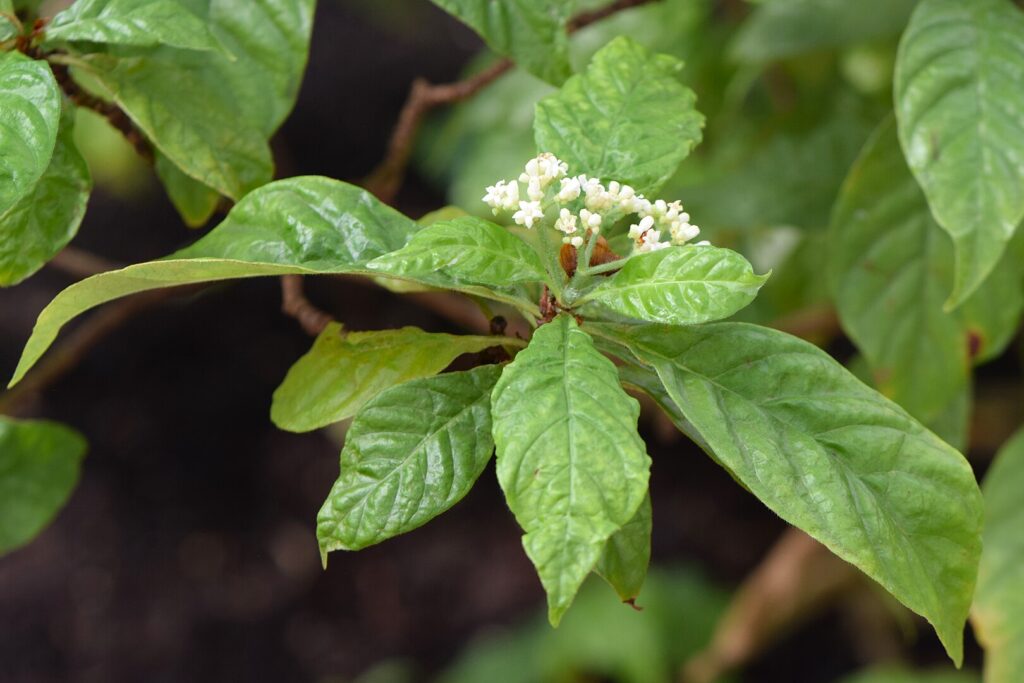
Wild coffee brings understated elegance to shaded Florida gardens, growing into a dense, rounded shrub 4-6 feet tall and 3-4 feet wide with glossy, dark green leaves marked by prominent parallel veins.
Small, fragrant white flowers appear in flat-topped clusters during summer, followed by bright red berries that ripen in fall and winter, creating a striking contrast against the dark foliage.
These berries are particularly favored by wood thrushes, various warblers, vireos, and thrushes, while the flowers attract small native bees and other pollinators. The plant also serves as a host for several butterfly species, including the white peacock and tropical checkered-skipper.
Wild coffee naturally occurs in Florida’s hammocks and shaded woodlands, thriving in partial to full shade with consistently moist, organic-rich soil.
Its tolerance for deep shade and ability to form attractive colonies make it an excellent choice for naturalizing under tree canopies, where it creates a lush understory that supports both resident and migratory songbirds.
5. Marlberry (Ardisia escallonioides)
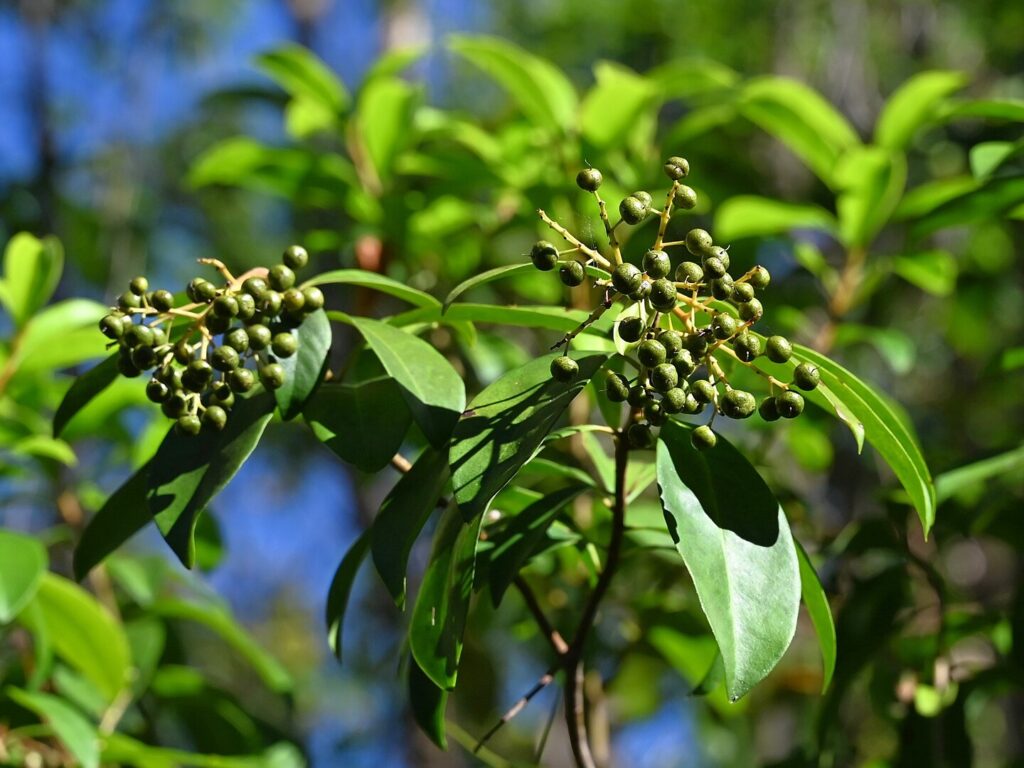
Marlberry forms an elegant evergreen shrub reaching 8-12 feet tall and 6-8 feet wide, with leathery, dark green leaves that provide year-round structure in the landscape.
Clusters of small, star-shaped white flowers appear in spring and summer, followed by dark purple to black berries that ripen in fall and persist through winter. These berries are particularly valuable to migratory birds, including various warblers, vireos, and thrushes that rely on them during their journeys along Florida’s coast. The dense branching structure also provides excellent nesting sites for small songbirds.
Native to Florida’s coastal hammocks and maritime forests, marlberry demonstrates remarkable salt tolerance and thrives in full sun to partial shade with well-draining soil.
Its ability to handle coastal conditions while providing both food and shelter makes it an excellent choice for seaside gardens and areas that experience salt spray, where it can serve as both a landscape anchor and a crucial stopover resource for traveling birds.
6. Simpson’s Stopper (Myrcianthes fragrans)
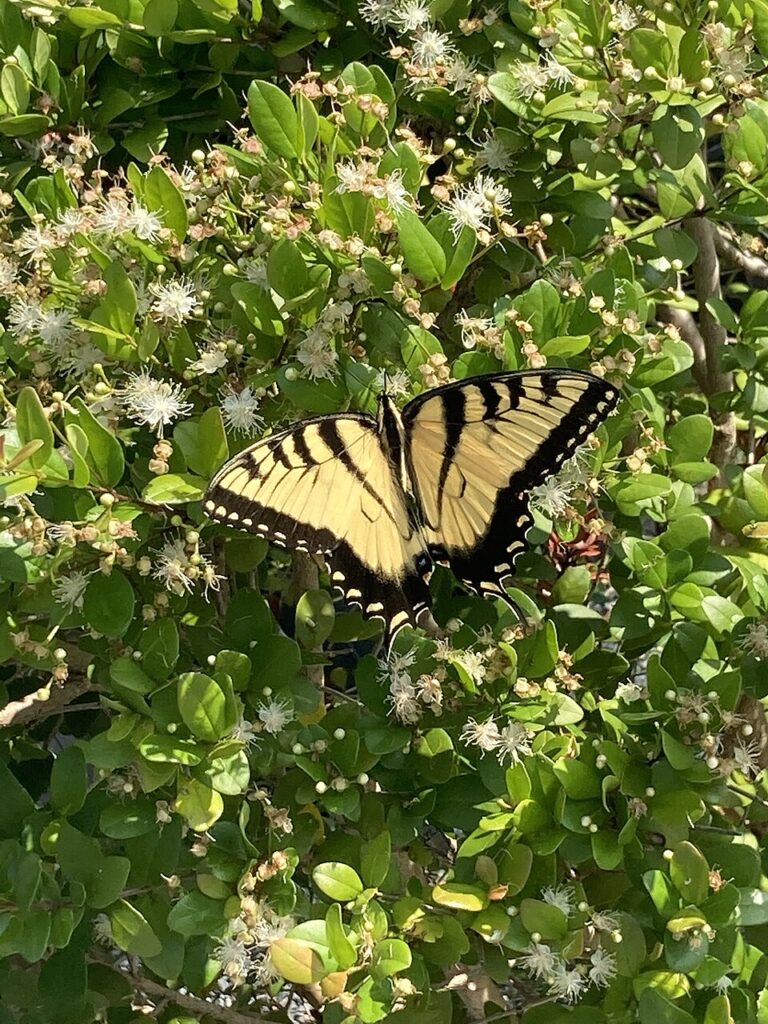
By BeckNomen – Own work, CC0, Link
Simpson’s stopper develops into a dense, multi-stemmed shrub or small tree reaching 10-15 feet tall and 8-10 feet wide, with attractive reddish-brown bark that peels to reveal smooth, lighter-colored wood underneath.
The plant produces masses of small, white, fragrant flowers in spring and summer that attract native bees, butterflies, and other beneficial insects. These blooms are followed by orange-red berries that ripen in fall and winter, providing food for mockingbirds, cardinals, blue jays, and various migratory species.
The dense branching structure creates excellent nesting habitat for small birds, while the berries persist long enough to support wildlife through the winter months.
Native to Florida’s hammocks and coastal areas, Simpson’s stopper thrives in full sun to partial shade with well-draining soil and demonstrates good drought tolerance once established.
Its compact growth habit and attractive bark make it suitable for use as a specimen plant or informal hedge, while its wildlife value and low maintenance requirements make it an excellent choice for naturalistic landscapes.
7. Spicewood (Calyptranthes pallens)
Spicewood forms a graceful, open shrub reaching 8-12 feet tall and 6-8 feet wide, with smooth, pale gray bark and glossy green leaves that provide an elegant backdrop for its delicate flowers.
Small, white, fragrant flowers appear in clusters during spring and summer, attracting native bees, small butterflies, and other beneficial insects with their sweet fragrance. The flowers are followed by small, dark purple fruits that provide food for various songbirds, including mockingbirds, catbirds, and seasonal migrants.
The plant’s open growth habit creates ideal nesting sites for small birds while allowing air circulation that helps prevent fungal issues.
Native to Florida’s coastal hammocks and tropical hardwood forests, spicewood prefers partial shade to full sun with well-draining, organic-rich soil and shows good tolerance for both drought and occasional flooding.
Its refined appearance and manageable size make it an excellent choice for more formal landscape settings while still providing valuable wildlife habitat and food sources.
8. Elderberry (Sambucus canadensis)
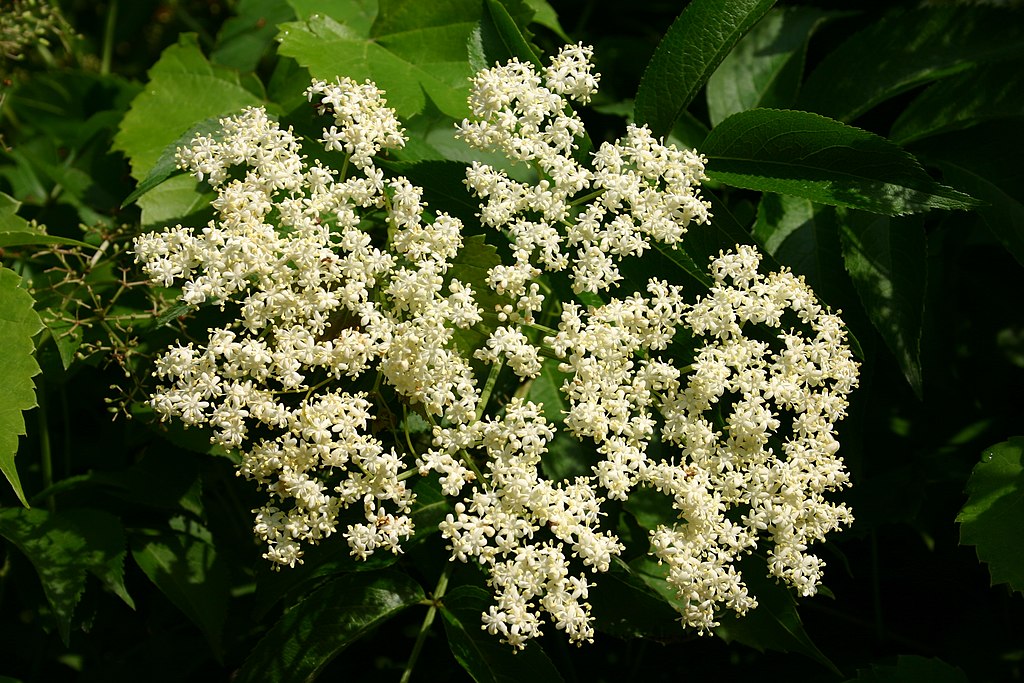
American elderberry creates a fast-growing, multi-stemmed shrub reaching 6-10 feet tall and equally wide, with compound leaves that provide a lush, tropical appearance in the landscape.
The plant’s most spectacular feature is its large, flat-topped clusters of tiny white flowers that can reach 6-8 inches across, blooming in late spring and early summer and attracting countless beneficial insects, including native bees, butterflies, and predatory insects that help control garden pests.
These impressive flower clusters are followed by dark purple-black berries that ripen in late summer and fall, providing food for over 40 species of birds including bluebirds, cardinals, mockingbirds, woodpeckers, and various warblers.
The berries are also edible for humans when cooked and can be used for jams, jellies, and syrups.
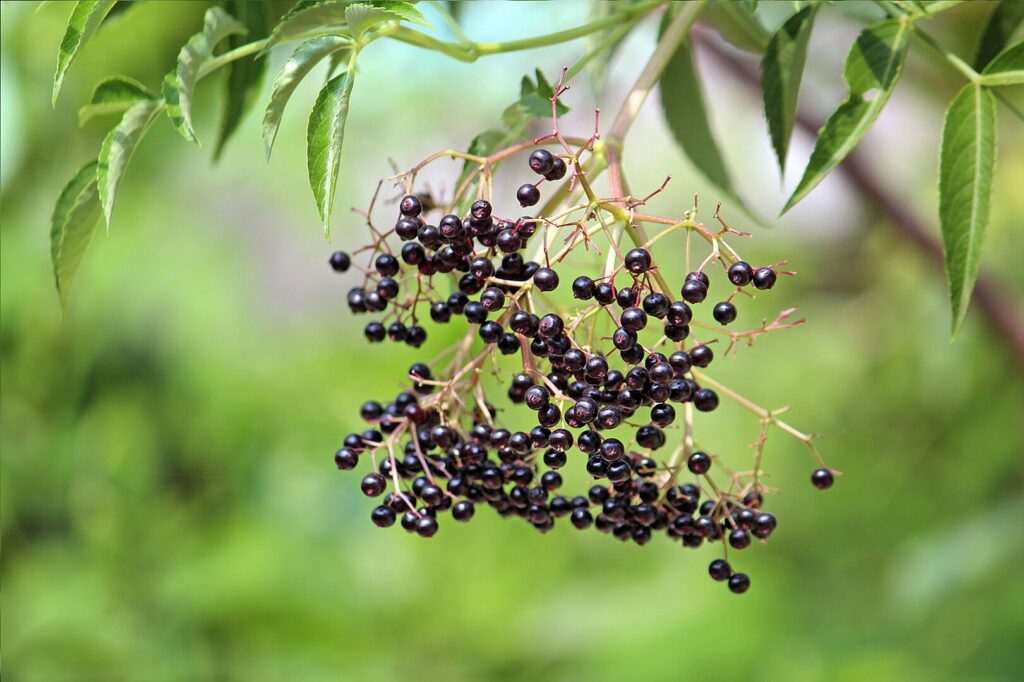
Native to Florida’s wetland edges, stream banks, and moist woodlands, elderberry thrives in full sun to partial shade with consistently moist, fertile soil.
Its rapid growth and substantial size make it ideal for naturalistic landscapes, rain gardens, and areas where quick wildlife habitat establishment is desired.
9. Wax Myrtle (Morella cerifera)
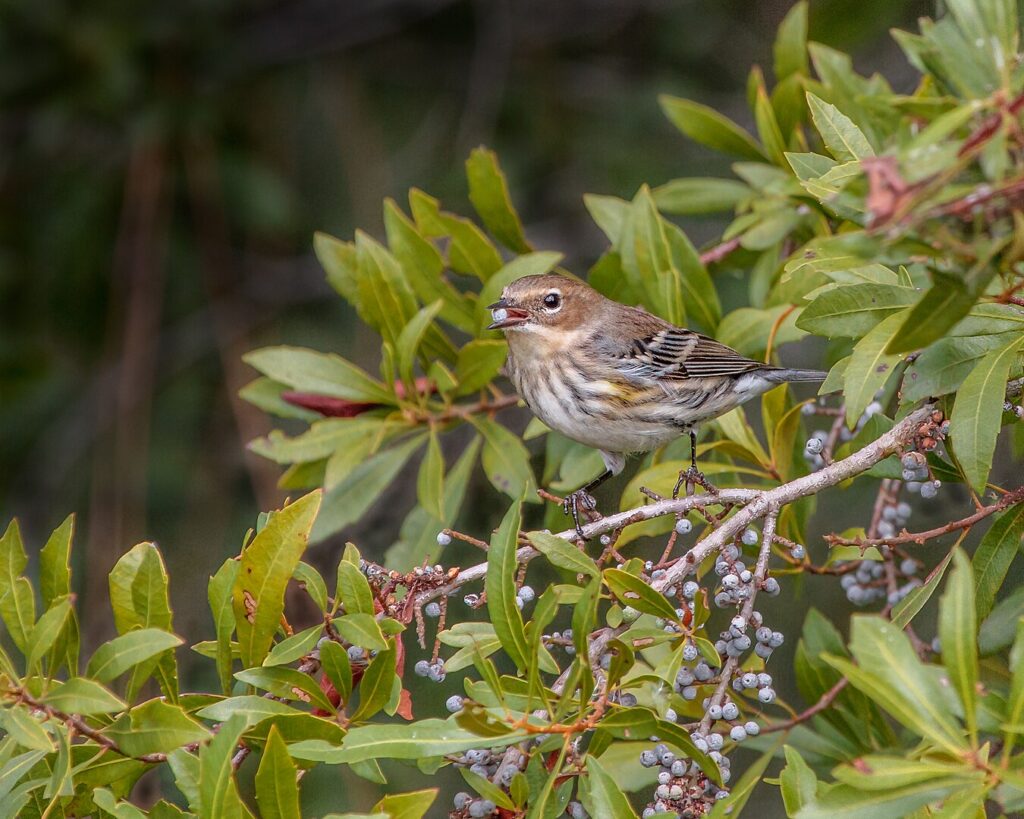
Wax myrtle develops into a fast-growing, evergreen shrub or small tree reaching 15-20 feet tall and 10-15 feet wide, with narrow, aromatic leaves that release a pleasant fragrance when crushed.
The plant produces inconspicuous flowers in early spring, but its true value comes from the waxy, blue-gray berries that appear on female plants in fall and persist through winter. These berries are particularly important for wintering birds, including tree swallows, yellow-rumped warblers, and various other species that rely on them during the coldest months when other food sources are scarce.
The plant also serves as a host for red-banded hairstreak butterflies, whose larvae feed on the leaves.
Native to Florida’s coastal areas, wetland edges, and disturbed sites, wax myrtle demonstrates remarkable adaptability, thriving in full sun to partial shade and tolerating both wet and dry conditions, as well as salt spray.
Its rapid growth and ability to fix nitrogen in the soil make it an excellent choice for restoration projects, while its dense growth provides excellent cover for nesting birds and small wildlife.
10. Coral Bean (Erythrina herbacea)
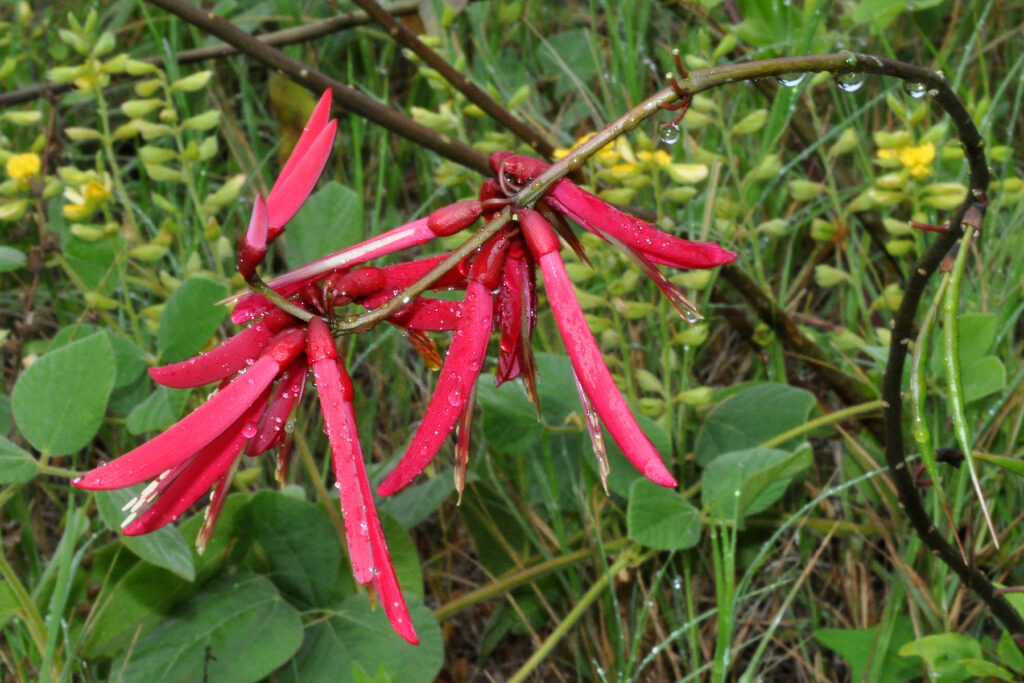
Coral bean creates one of the most dramatic spring displays in the Florida landscape, growing as a deciduous shrub 6-8 feet tall and 4-6 feet wide with an open, architectural form.
The plant’s most spectacular feature is its brilliant red flower spikes that emerge in early spring before the leaves appear, creating 12-18 inch tall clusters of tubular blooms that seem to glow in the landscape.
These flowers are specifically adapted for hummingbird pollination, particularly ruby-throated hummingbirds during their spring migration, though various butterflies and long-tongued bees also visit them.
Following the blooms, distinctive pods develop containing bright red seeds that are toxic but add ornamental interest. The plant naturally dies back to the ground in winter, re-emerging each spring from its tuberous root system.
Native to Florida’s hammocks, woodland edges, and coastal areas, coral bean thrives in full sun to partial shade with well-draining soil and good drought tolerance.
Its unique growth habit and stunning spring display make it an excellent choice for adding dramatic seasonal interest while providing crucial nectar resources for migrating hummingbirds.
11. Wild Lime (Zanthoxylum fagara)
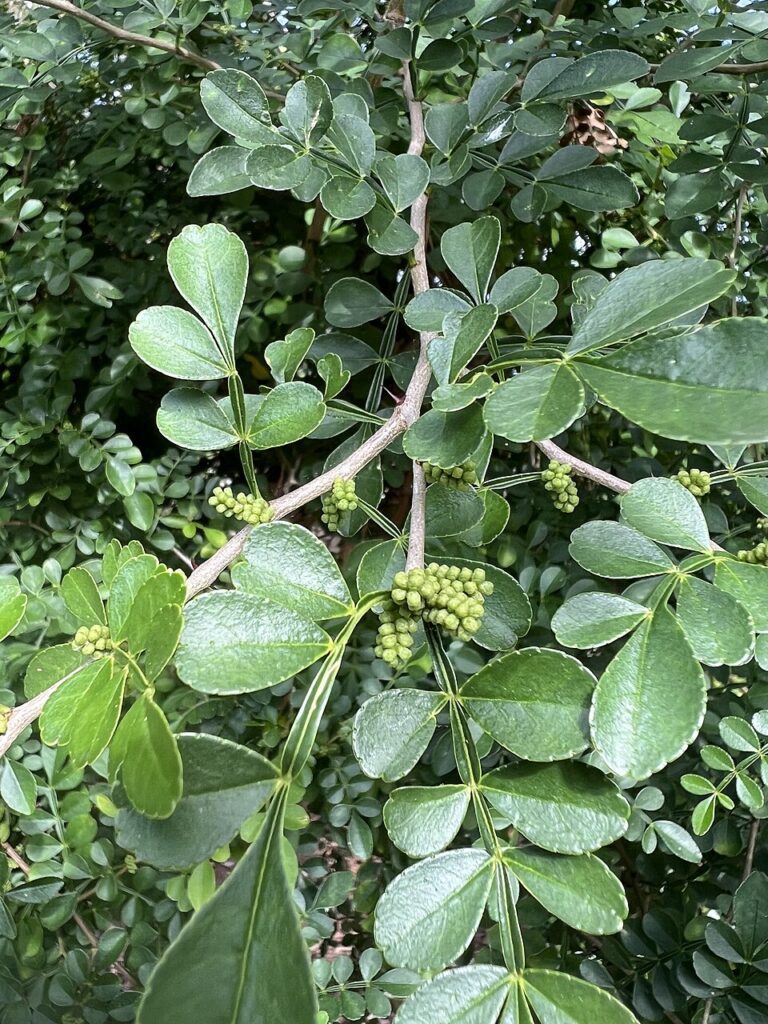
Wild lime forms a dense, thorny shrub reaching 6-10 feet tall and 4-8 feet wide, with compound leaves that release a citrusy fragrance when crushed, indicating its membership in the citrus family.
The plant produces small, inconspicuous yellowish-green flowers in clusters during spring and summer, followed by tiny black berries that provide food for various songbirds, including mockingbirds, cardinals, and painted buntings.
However, the plant’s greatest wildlife value comes from its role as the primary host plant for the giant swallowtail butterfly (Papilio cresphontes), North America’s largest butterfly, whose caterpillars feed exclusively on plants in the citrus family.
The thorny branches also provide excellent nesting protection for small birds, creating secure sites where they can raise their young safely from predators.
Native to Florida’s coastal hammocks, scrublands, and disturbed areas, wild lime thrives in full sun to partial shade with well-draining soil and demonstrates excellent drought and salt tolerance.
Its dense growth habit and defensive thorns make it ideal for creating natural barriers or wildlife corridors while supporting one of Florida’s most impressive butterfly species.
12. Snowberry (Chiococca alba)
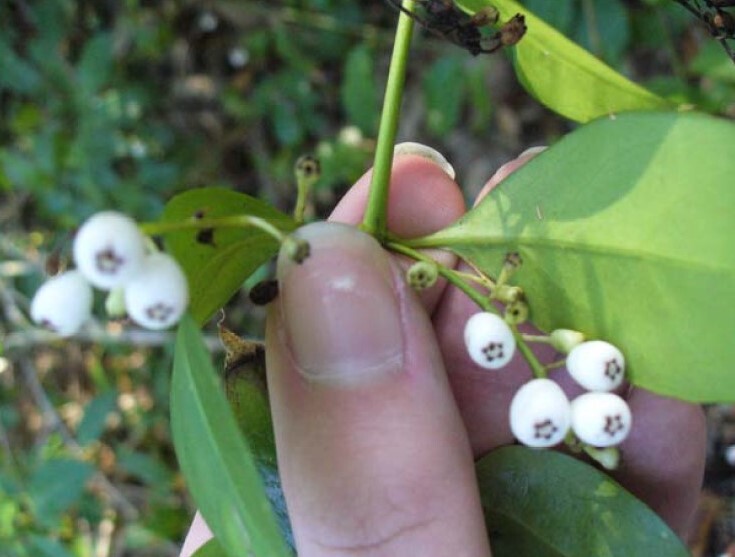
Snowberry forms a small, deciduous shrub reaching 3-6 feet tall and 4-6 feet wide, with simple, oval leaves that provide a fine texture in the landscape. Small, pink bell-shaped flowers appear in clusters during summer, followed by distinctive white berries that persist well into winter, creating an attractive display against bare branches.
These berries provide important food for various game birds, including bobwhite quail and wild turkeys, as well as songbirds such as cardinals, mockingbirds, and various finches.
The dense, twiggy growth habit also creates excellent cover for small wildlife and nesting sites for birds.
Native to Florida’s woodland edges, clearings, and disturbed areas, snowberry thrives in full sun to partial shade with well-draining soil and shows good tolerance for both drought and occasional flooding.
Its compact size and winter interest make it an excellent choice for smaller landscapes or as part of mixed shrub borders, while its wildlife value and low maintenance requirements make it ideal for naturalistic gardens focused on supporting native fauna.
13. Buttonwood (Conocarpus erectus)
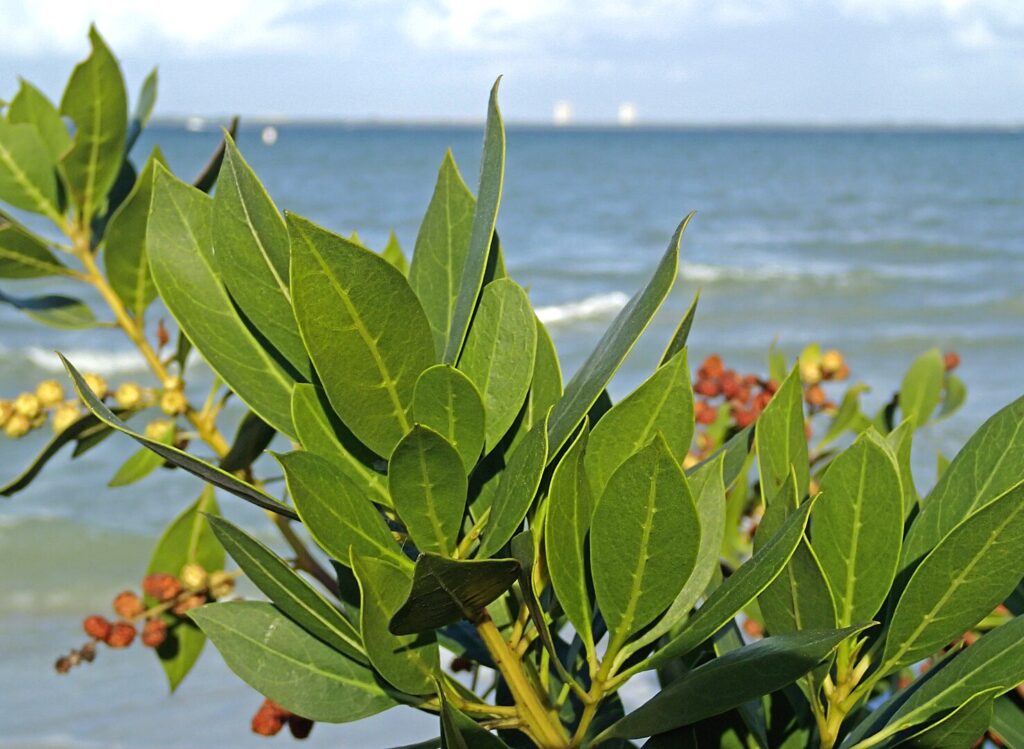
Buttonwood develops into a large, evergreen shrub or small tree reaching 12-20 feet tall and 8-15 feet wide, with distinctive silvery-green leaves that shimmer in coastal breezes. The plant produces small, inconspicuous flowers in dense, globe-shaped clusters during spring and summer, attracting native bees, butterflies, and other beneficial insects.
These flowers are followed by small, cone-like fruits that give the plant its common name and provide food for various coastal birds. The dense branching structure creates excellent nesting habitat for birds, while the plant’s ability to withstand salt spray and strong winds makes it invaluable for coastal wildlife that needs shelter from harsh conditions.
Native to Florida’s coastal areas, mangrove edges, and salt marshes, buttonwood thrives in full sun with well-draining soil and demonstrates exceptional salt tolerance, making it one of the few native plants that can survive in the harsh conditions of beachfront properties.
Its sculptural form and silvery foliage make it an attractive landscape plant, while its ecological importance in coastal ecosystems makes it essential for supporting birds and other wildlife in seaside environments.
14. Yaupon Holly (Ilex vomitoria)
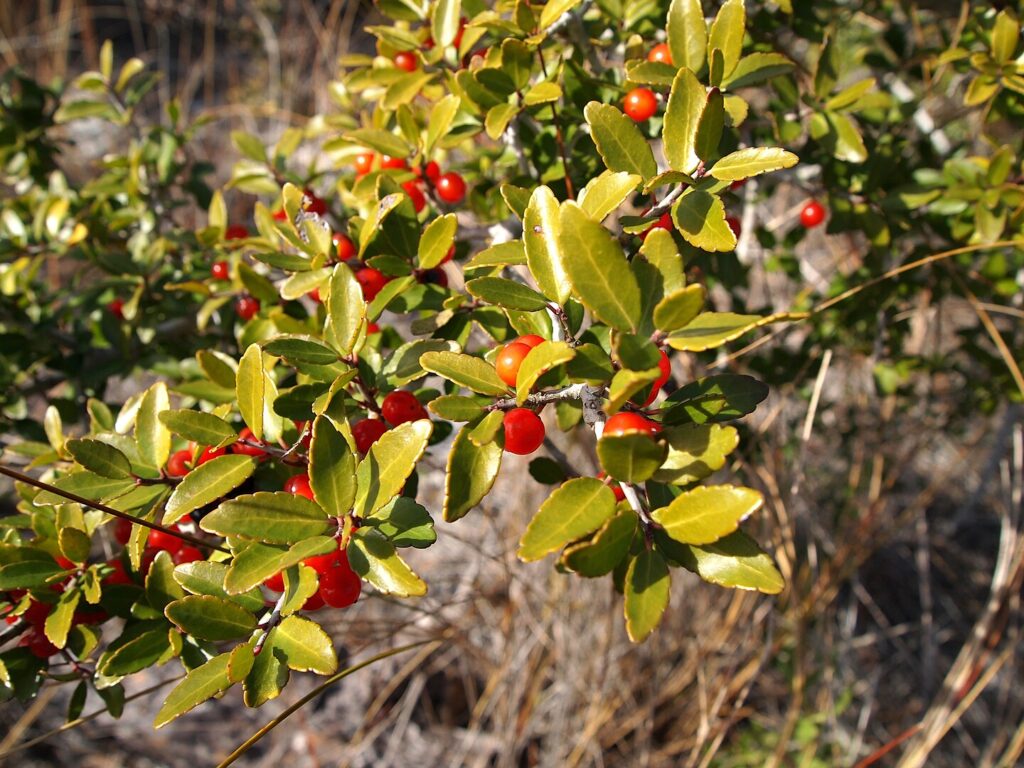
Yaupon holly forms a dense, evergreen shrub reaching 8-15 feet tall and 6-12 feet wide, with small, glossy green leaves that provide year-round structure in the landscape.
The plant is dioecious, with male and female plants producing different flowers, and female plants developing bright red berries that appear in fall and persist through winter, creating a spectacular display that rivals any ornamental holly.
These berries are particularly valuable to wintering birds, including cedar waxwings, mockingbirds, robins, and various thrushes that rely on them during the coldest months.
Yaupon holly holds the distinction of being the only native North American plant that naturally contains caffeine, and Native Americans traditionally used it to make a ceremonial drink.
Native to Florida’s coastal areas, hammocks, and woodland edges, yaupon holly thrives in full sun to partial shade with well-draining soil and demonstrates excellent drought tolerance and adaptability to various soil types.
Its dense growth habit and attractive berries make it an excellent choice for hedging or specimen planting, while its wildlife value and low maintenance requirements make it ideal for sustainable landscapes focused on supporting native bird populations.
15. Wild Sage (Lantana involucrata)
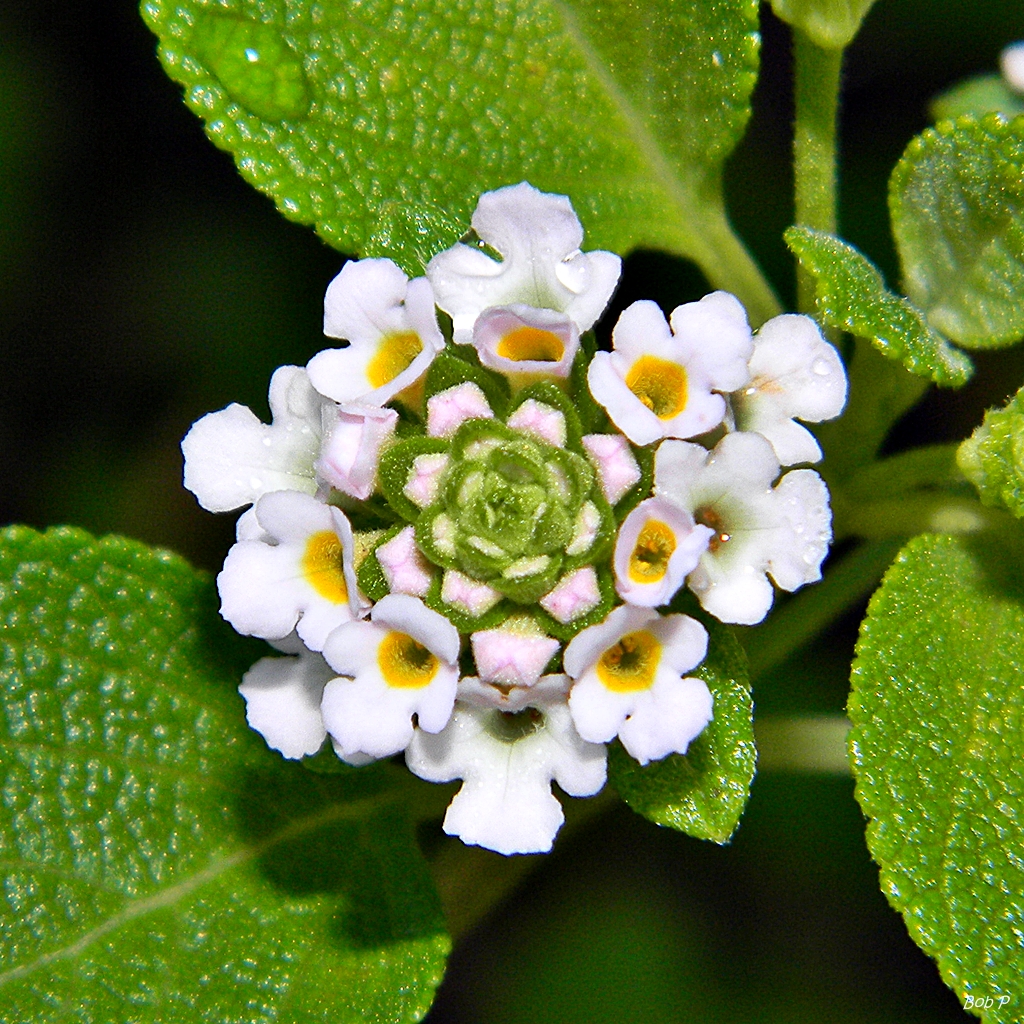
Wild sage forms a compact, evergreen shrub reaching 3-5 feet tall and 4-6 feet wide, with small, aromatic leaves that release a pleasant fragrance when brushed against.
The plant produces small, white flowers with bright yellow centers in dense, rounded clusters throughout the warm months, creating a continuous display that attracts numerous butterfly species including Gulf fritillaries, zebra longwings, white peacocks, and various skippers and hairstreaks.
Unlike its weedy invasive cousin, wild sage maintains a more controlled growth habit and provides superior ecological value by supporting native pollinator populations. The flowers are followed by small, dark berries that provide food for various songbirds, including mockingbirds and cardinals.
Native to Florida’s coastal hammocks, scrublands, and disturbed areas, wild sage thrives in full sun to partial shade with well-draining soil and demonstrates excellent drought and salt tolerance.
Its compact size and continuous blooming make it an excellent choice for butterfly gardens, coastal landscapes, and areas where a reliable nectar source is needed to support native pollinator populations while maintaining a neat, controlled appearance in the landscape.
16. Florida Anise (Illicium floridanum)
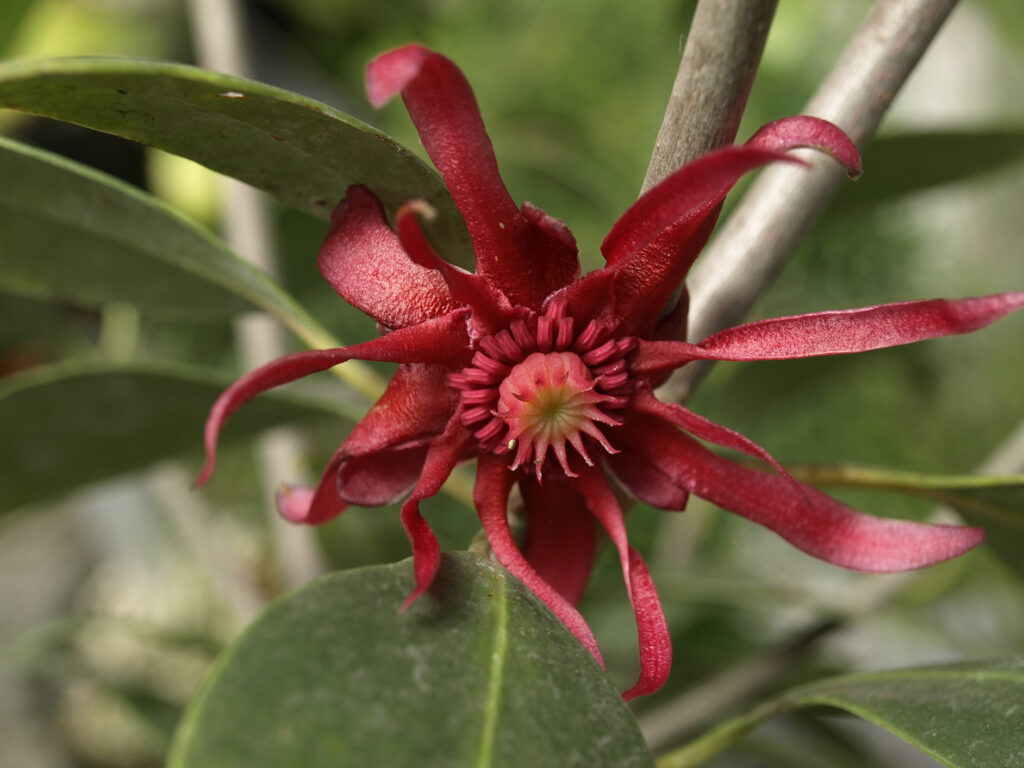
Florida anise creates an elegant, evergreen shrub reaching 6-10 feet tall and 4-6 feet wide, with glossy, dark green leaves that release a distinctive licorice-like fragrance when crushed.
The plant’s most striking feature is its unusual star-shaped flowers that appear in spring, with deep red to maroon petals arranged in a distinctive pattern that resembles small fireworks against the dark foliage.
These flowers attract various flies and beetles that serve as pollinators, though the plant’s primary wildlife value comes from its dense evergreen structure that provides year-round shelter and nesting sites for small birds, including various warblers, wrens, and thrushes.
The flowers are followed by small, star-shaped seed pods that split open to reveal shiny brown seeds, though these are toxic to mammals.
Native to Florida’s wetland edges, stream banks, and moist woodlands, Florida anise thrives in partial to full shade with consistently moist, acidic soil rich in organic matter.
Its tolerance for wet conditions and shade makes it an excellent choice for rain gardens, bog gardens, and areas under tree canopies where many other shrubs struggle. The plant’s architectural form and unique flowers make it a conversation piece in the landscape, while its dense growth provides crucial cover for wildlife in shaded, moist environments.
17. Oakleaf Hydrangea (Hydrangea quercifolia)
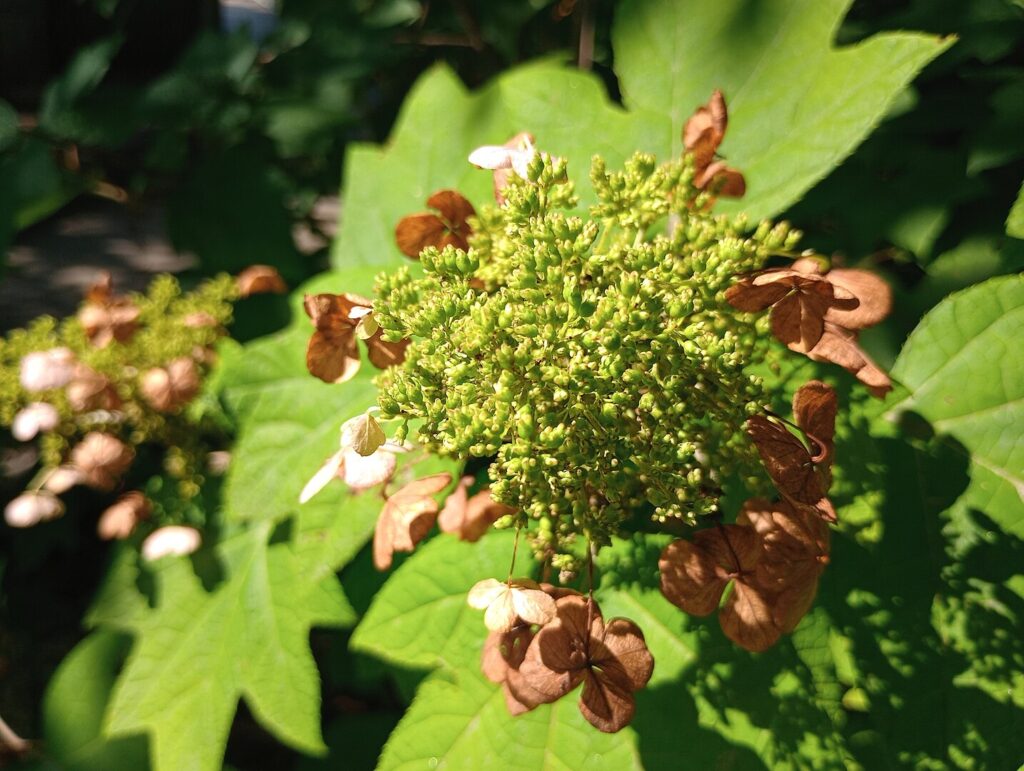
Oakleaf hydrangea forms a deciduous shrub reaching 6-8 feet tall and 4-6 feet wide, with distinctive large, lobed leaves that resemble oak leaves and provide spectacular fall color ranging from orange and red to deep burgundy.
The plant produces impressive cone-shaped flower clusters 6-12 inches long in late spring and early summer, starting white and aging to pink and bronze, creating a changing display throughout the season.
These flowers attract various beneficial insects, including native bees and butterflies, while the dense branching structure and peeling cinnamon-colored bark provide year-round architectural interest and nesting sites for small birds such as Carolina wrens, tufted titmice, and various warblers.
The flowers are followed by small brown seed capsules that persist through winter, providing food for finches and other seed-eating birds.
Native to Florida’s rich woodlands, stream banks, and shaded ravines, oakleaf hydrangea thrives in partial shade to full shade with moist, well-draining, organic-rich soil and benefits from protection from hot afternoon sun.
Its dramatic seasonal changes and substantial size make it an excellent choice for woodland gardens and naturalistic landscapes, while its wildlife value and stunning fall display make it a standout plant for supporting both aesthetic and ecological goals in shaded garden areas.
Designing with Native Florida Shrubs
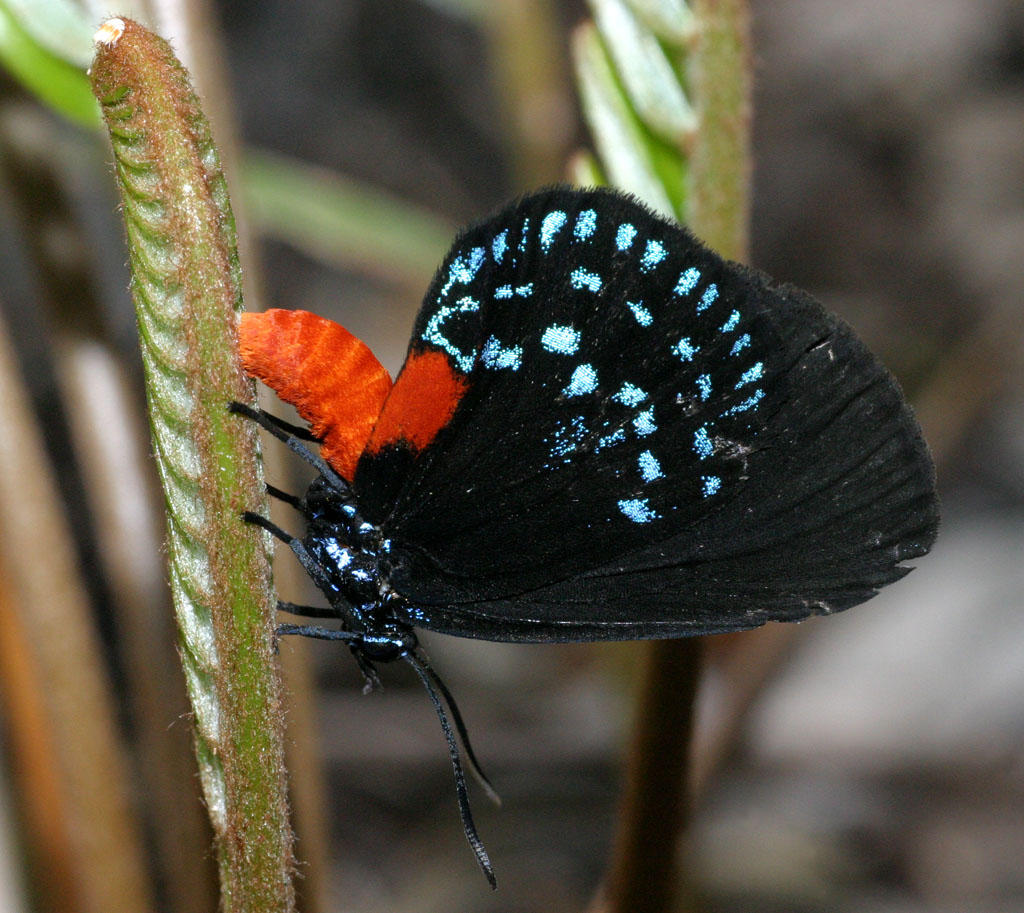
Creating beautiful, functional landscapes with Florida’s native shrubs involves understanding both their aesthetic qualities and growth habits.
Here’s how to incorporate them effectively:
Layered Borders with Year-Round Interest
Create depth and visual rhythm by arranging native Florida shrubs according to height, with taller species like wax myrtle or Simpson’s stopper at the back, mid-sized beautyberry and firebush in the middle, and low-growing coontie at the front.
For year-round appeal, combine evergreen species (Simpson’s stopper, coontie, wild coffee) with those offering seasonal highlights like beautyberry’s purple fall berries or Walter’s viburnum’s spring flower display.
For example, a north-facing border might feature a wax myrtle backdrop (10-15′ tall) for evergreen structure, with Simpson’s stopper (6-8′ tall) planted in small groups for mid-layer interest. The middle layer could include wild coffee (4-5′ tall) for shade areas and beautyberry (5-6′ tall) where more light penetrates, while the foreground features drought-tolerant coontie (2-3′ tall) providing year-round architectural form.
Creating Privacy Screens
For natural privacy barriers, consider these planting strategies:
- For quick coverage: Plant firebush 4-5 feet apart in Central/South Florida for a fast-growing, flowering hedge that can reach 8 feet in a single growing season.
- For year-round dense screening: Space Simpson’s stopper or Walter’s viburnum 4-6 feet apart, allowing their naturally dense growth to create a solid visual barrier within 2-3 years.
- For mixed-height screening: Alternate wax myrtle (10-15′ tall) with Walter’s viburnum (8-10′ tall) to create a more natural, undulating appearance while maintaining privacy.
Wildlife-Focused Groupings
Strategic groupings of native Florida shrubs can maximize habitat value:
- Butterfly sanctuary: Combine firebush (for nectar) with coontie (for atala butterfly caterpillars) in sunny locations.
- Bird haven: Group fruiting species like beautyberry, Simpson’s stopper, and wild coffee to create a seasonal buffet that attracts diverse bird species year-round.
- Complete habitat zone: Layer wax myrtle (nesting sites and winter berries) with Walter’s viburnum (spring flowers, summer fruits) and coontie (evergreen protection), providing food, shelter, and nesting opportunities in a compact space.
Maintaining Your Native Florida Shrubs
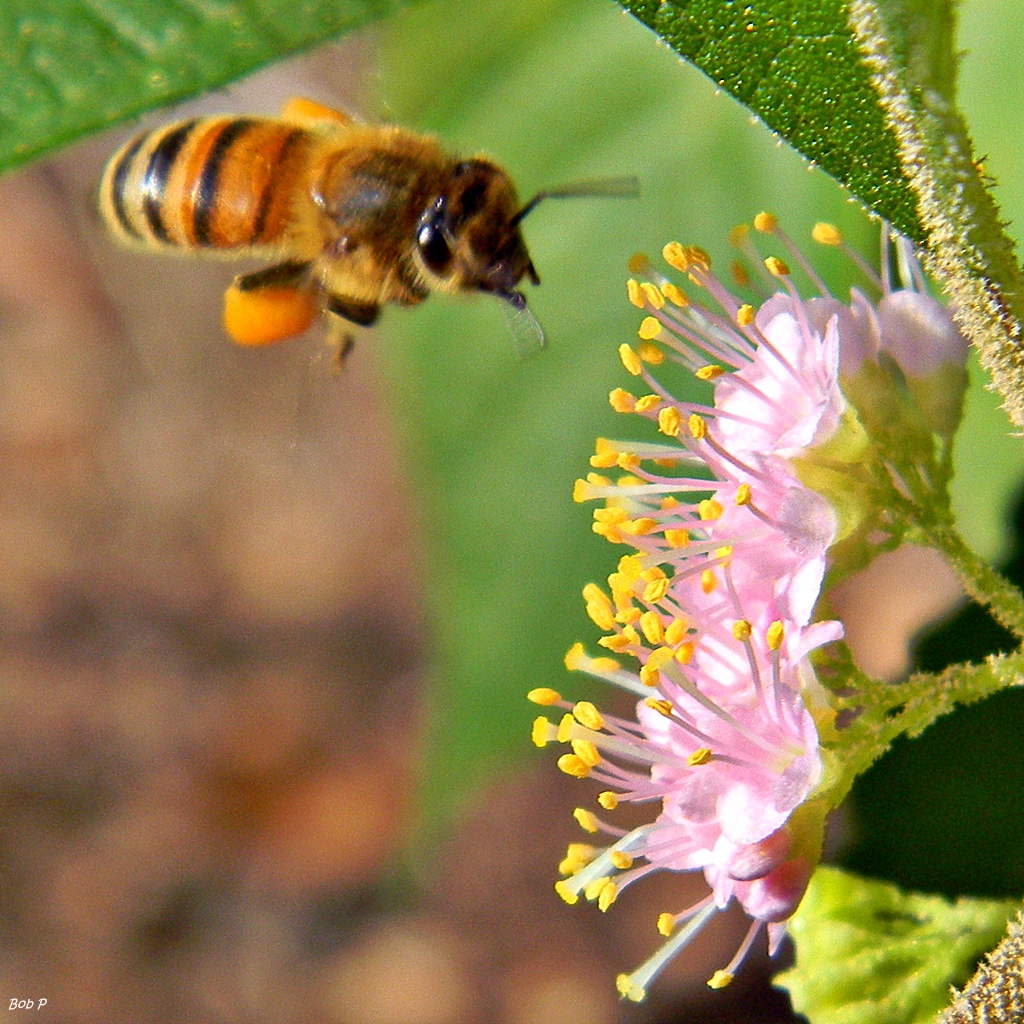
Native Florida shrubs generally require less maintenance than exotic species, but some thoughtful care maximizes their landscape performance:
Pruning Timing
Schedule major pruning of spring-flowering shrubs like Walter’s viburnum immediately after blooming to avoid removing next year’s flower buds.
Ultimate Size
While most native Florida shrubs can be maintained smaller than their natural size, selecting the right plant for your space reduces maintenance. For tight spaces, choose naturally compact species like coontie rather than constantly pruning larger species.
Succession Planning
Many native shrubs like beautyberry and firebush are relatively short-lived (5-10 years) but self-seed readily. Allow some seedlings to establish as older specimens decline for a self-perpetuating landscape.
Adding Native Florida Shrubs for Butterflies, Bees, and Birds
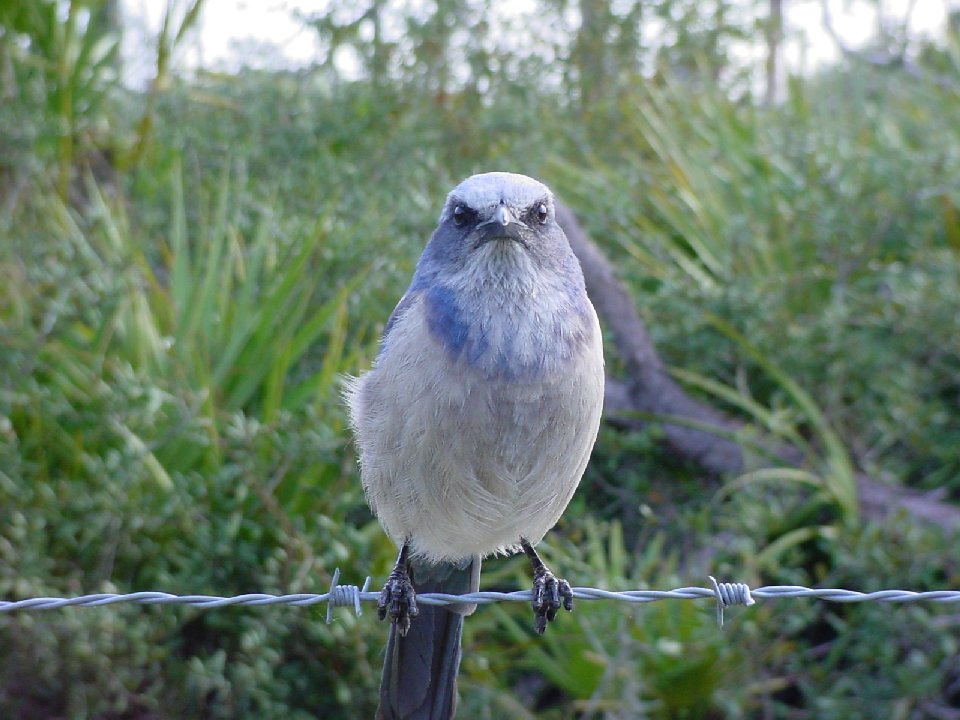
By thoughtfully incorporating these versatile native Florida shrubs into your landscape design, you’ll create a garden that provides year-round beauty while supporting Florida’s incredible biodiversity. Remember that even adding just a few key native shrubs to an existing landscape can dramatically increase its wildlife value while reducing maintenance needs.
Be patient as your wildlife garden develops. Native shrubs may take a year or two to become established, but once they do, they will provide decades of low-maintenance wildlife habitat. The birds, butterflies, and other creatures that visit your garden will reward your efforts with their presence, creating a living landscape that changes with the seasons and provides endless opportunities for wildlife observation and enjoyment.
Start small if you’re new to native gardening — perhaps with a butterfly garden or a rain garden in a problem area. As you observe the wildlife your garden attracts and develop confidence in working with native plants, you can gradually expand.
Remember that gardening with natives is a journey of discovery, connecting you more deeply with Florida’s natural heritage while creating sustainable beauty around your home.
Featured Image: By NPS photo – NPGallery, Public Domain, Link